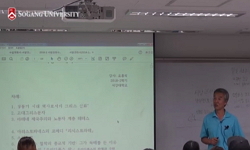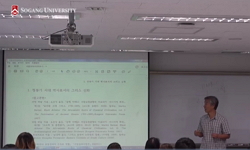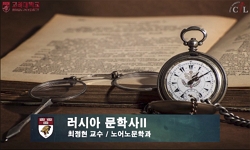청동기는 생업도구의 수준에서 벗어나 전쟁무기와 종교의기로 제작·보급되었다. 이논문은 종교의기이자 무구(巫具)로서 제사장들이 보유했던 청동거울, 그 가운데서도 다뉴경을 중심으로 ...
http://chineseinput.net/에서 pinyin(병음)방식으로 중국어를 변환할 수 있습니다.
변환된 중국어를 복사하여 사용하시면 됩니다.
- 中文 을 입력하시려면 zhongwen을 입력하시고 space를누르시면됩니다.
- 北京 을 입력하시려면 beijing을 입력하시고 space를 누르시면 됩니다.
논문 : 동북아지역(東北亞地域)에서의 다뉴경(多뉴鏡) 부장묘(副葬墓)의 전개(展開) = Development of the Graves with Geometric-design Bronze Mirror in Northeast Asia
한글로보기https://www.riss.kr/link?id=A99584862
- 저자
- 발행기관
- 학술지명
- 권호사항
-
발행연도
2012
-
작성언어
Korean
- 주제어
-
KDC
911
-
자료형태
학술저널
-
수록면
5-31(27쪽)
- 제공처
- 소장기관
-
0
상세조회 -
0
다운로드
부가정보
국문 초록 (Abstract)
청동기는 생업도구의 수준에서 벗어나 전쟁무기와 종교의기로 제작·보급되었다. 이논문은 종교의기이자 무구(巫具)로서 제사장들이 보유했던 청동거울, 그 가운데서도 다뉴경을 중심으로 다뉴경이 부장된 무덤들의 역사문화적 의미를 고찰한다. 다뉴경은 대릉하유역부터 한반도를 거쳐 일본 구주(九州)지역에 이르는 범(汎) 십이대영 자문화권(十二臺營子文化圈)을 나타내는 유물이다. 다뉴경 부장묘는 이 문화권에 속한 고조선, 부여, 한 왜(倭)의 범주에 속하는 소국(小國)들의 수장들의 무덤으로서, 다뉴경뿐만 아니라 다른 청동기 및 토기부장품들이 부장되어 있다. 이 부장품들은 당시의 chiefdom 사회의 수장들을 중심으로 한 정치상황뿐만 아니라 범 대영자문화권 내의 기술교류를 반영한다. 다뉴경은 중국 동북지역에서 한반도와 일본열도에 걸쳐 당시 엘리트들이 제사장의 신분과 지위를 과시하는 위세품인데, 전파과정에 따라 대릉하지역의 A형 다뉴경, 요동과 길림지역의 B형 다뉴경, 한반도 서남부와 일본 구주지역의 C형 다뉴경으로 발전되어갔다. A형 다뉴경으로부터 B형 다뉴경의 등장은 연(燕)나라의 동진으로 고조선의 강역이 이동한 것에 기인한다. C형 다뉴경은 중국 동북지역에서는 발견되지 않고 한반도 서북한과 서남한 지역, 일본 구주(九州)지역에서 발견된다. 이는 다뉴경을 최고 위세품으로 채용하는 계층이 상위급 수장(首長)에서 차상급 이하의 엘리트로 내려갔음과 일본 구주 지역의 소국들이 한반도 서남부지역의 마한(馬韓)지역과 교류하고 있었음을 보여준다.
다국어 초록 (Multilingual Abstract)
The geometric-design bronze mirrors of which numbers about 80, are assumed to be as ritual tools and political symbols of priest-king during the 8th~2nd century BCE. Those are classified into three types, that are A, B, and C, and each of them is assu...
The geometric-design bronze mirrors of which numbers about 80, are assumed to be as ritual tools and political symbols of priest-king during the 8th~2nd century BCE. Those are classified into three types, that are A, B, and C, and each of them is assumed to be made and used in 800~400BCE, 400~200BCE, and 200~50BCE. The distributional range of three types were changed under the historical conditions, which includes Yen(燕)`s advance toward the northeastern China and Wiman(衛滿) becoming a king of Gojoseon(古朝鮮). The first A type mirrors were distributed mainly in northeastern China, B type ones in the geographical range from northeastern China to the Korean peninsular, and C type ones from the Korean peninsular to the Japanese archipelago. The size and numbers of mirrors are reflective of the social position of the person with whom are buried in the grave, and so the graves with mirrors in each type are those of the most unfluential leaders of ``Kuk(國)``―the political and regional groups at the time. In A type mirror stage, the graves with most abundant artefacts are located in Liaoning pronince(遼寧省); the graves with most abundant artefacts in B type mirror stage are in Chung-nam(忠南) province; and the graves with C type mirrors in Cheon-nam(全南) province. Each region with those burials was the trade-center in Korea connecting China and Japan, and is assumed to be the location of the most influential ``Kuk(國)`` in old Korea.
동일학술지(권/호) 다른 논문
-
- 단국사학회
- 디마자브에르덴바타르 ( Erdenbatar D )
- 2012
-
남(南).시베리아 미누신스크 분지의 청동기시대 고대 문화들
- 단국사학회
- N.A.보꼬벤코 ( Bokovenko N. A. )
- 2012
-
- 단국사학회
- 박경식 ( Kyung Sik Park )
- 2012
-
영국의 북아메리카 식민지에 대한 인식과 정책의 변화, 1756~1770
- 단국사학회
- 김현수 ( Hyun Soo Kim )
- 2012




 KISS
KISS





